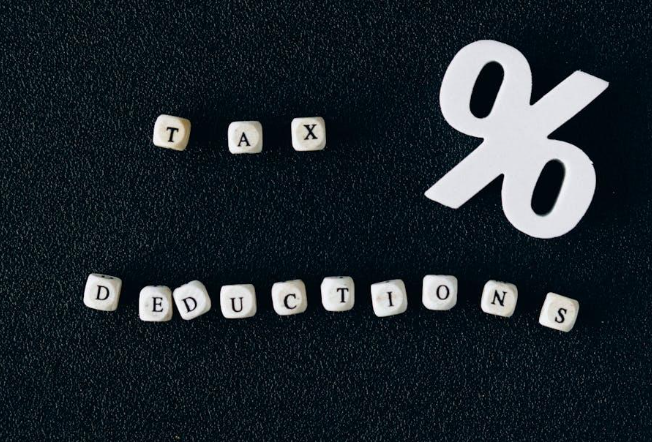
The user experience is no longer an afterthought—it’s the heart of every product decision. From onboarding flows to micro-interactions, design directly influences whether users stay, engage, or churn. As more SaaS companies shift to customer-centric models, hiring the right UI/UX designer becomes essential—not optional.
But what makes a designer stand out in 2025? It’s not just a polished portfolio or trendy dribble shots. The best designers blend design thinking, research, strategy, and technical understanding. Whether you’re looking to hire a UI UX designer for a growing startup or a scaling product team, understanding the must-have skills is crucial.
Let’s dive into the top 5 skills you should prioritize when hiring a UI/UX designer this year—and how they directly impact product success.
What Defines a Great UI/UX Designer in a Rapidly Evolving User-First Market?
1. User Research & Empathy-Driven Design
A great designer starts with understanding why a product exists—and who it’s for.
User research is the foundation of successful UX. Whether it’s persona mapping, interviews, usability testing, or analyzing behavioral data, the ability to extract insights and translate them into design is essential. Designers who can empathize with users build experiences that feel intuitive—not forced.
When you hire a UX designer, assess how they approach problem discovery. Ask:
- How do you gather and interpret user feedback?
- Can you walk me through a design you iterated based on real user pain points?
In 2025, SaaS companies that ignore user research will fall behind. Hiring designers who lead with empathy ensures your product roadmap is built on real needs—not assumptions.
2. Proficiency in Design Tools & Systems
Today’s designers are expected to work across tools and teams seamlessly. Whether it’s wireframing in Figma, prototyping in Adobe XD, or organizing scalable design systems—tool fluency is a must.
When you hire UI designers, look for:
- Mastery in Figma (still the most widely used tool in 2025)
- Ability to build and maintain design systems
- Understanding of responsive design principles
- Familiarity with handoff tools like Zeplin or Anima
A UI designer for hire should also understand component-based design to align with developers. This minimizes confusion during handoff and leads to faster shipping. SaaS companies, in particular, benefit when UI designers work closely with product engineers to reduce design debt and inconsistencies.
3. Interaction Design & Micro-Animation Expertise
It’s the small things that leave a big impression. Button states, hover animations, loading indicators—all contribute to a smoother, more delightful experience.
When you hire UI UX designers, skilled professionals understand how interaction design shapes user behavior. In fact, according to a 2024 Nielsen Norman report, micro-interactions boost user engagement by up to 23% in B2B SaaS products.
Here’s what to look for when hiring:
- Can the designer create meaningful animations using tools like Lottie or Framer?
- Do they understand transitions that enhance—not distract from—the flow?
- Can they explain why a certain motion supports usability?
These details differentiate a good product from a great one. For SaaS companies, this is often what leads to improved retention and user satisfaction.
4. Understanding of Front-End Development Basics
You don’t need a designer who can code full apps—but one who can communicate effectively with developers is gold.
If you’re looking to hire UI developers or hire UI UX developers for a cross-functional team, they should:
- Understand HTML, CSS, and basic JavaScript concepts
- Know what’s feasible from a development perspective
- Anticipate how their designs translate into code
When you hire UX developers, this hybrid knowledge reduces back-and-forth, missed specs, and rework.
Ask:
- Can you describe how you collaborate with developers during sprints?
- Have you ever designed with performance or accessibility in mind?
SaaS companies operating in lean teams especially benefit from designers who can think across disciplines—ensuring faster delivery and fewer implementation gaps.
5. Data-Driven Decision Making
Great designers use data as their compass.
Today, it’s not enough to create visually appealing layouts. UI/UX designers must leverage analytics, heatmaps, A/B test results, and customer feedback to refine experiences continuously.
When you consider UX designers for hire, ask:
- How have you used data to improve a design?
- Do you track metrics like task success, drop-off rates, or time on task?
The best candidates combine intuition with analytics to improve usability and performance. And for SaaS businesses, that means designing for conversions, renewals, and seamless onboarding—measurable metrics tied to real business impact.
Where to Find UI/UX Talent with These Skills
It’s not just about knowing what to look for—but also where to look.
Top platforms to find skilled designers include:
- Uplers – Vetted UI/UX talent with pre-assessed design and soft skills
- Dribbble Pro Business – Great for visual-heavy portfolios
- Behance – Broader pool of multidisciplinary creatives
- Toptal – High-end design talent, suited for enterprise projects
- LinkedIn & AngelList – Ideal for startup-focused designers
What Should the Interview Process Look Like?
Here’s a simple 3-step approach to vet UI/UX talent:
- Portfolio Review – Evaluate case studies with context. Look for processes more than pixels.
- Design Task or Critique – Assign a UX problem or ask them to critique an existing design.
- Team Interview – Check how well they fit with product managers and developers.
Ask scenario-based questions like:
- “How would you improve the onboarding of our app?”
- “What would you do if user data contradicted your design assumptions?”
Final Thoughts: Hire Smart, Not Just Fast
As the demand for intuitive products grows, so does the importance of hiring the right design talent. A great UI/UX designer doesn’t just create wireframes—they craft experiences that influence business results.
To hire UI UX designers who can keep up with the pace of SaaS growth in 2025, focus on:
- Research and empathy
- Technical tool fluency
- Animation and interaction design
- Developer collaboration
- Data-driven mindset
Also, don’t just look for design chops. Look for ownership, product thinking, and a user-first mindset. Whether you’re scaling a new product or redesigning an old interface, the right designer will make all the difference.
So, ask yourself: is this person just designing screens—or helping shape your product’s future? Now’s the time to build that dream team.
Author Bio;
For such content and more, feel free to contact Colton Harris He’s a highly experienced SEO expert with over 7 years of experience. His extensive knowledge and expertise in the field has helped numerous businesses and individuals to improve their online visibility and traffic. Harris writes and publishes content on business, technology, finance, marketing, and Cryptocurrency-related trends. He is passionate about sharing his knowledge and helping others to grow their online businesses.






